In the United States, Herbert Fowler‘s name is often absent in the discussion of the all-time great architects. Such is not the case when a similar discussion is held in the United Kingdom. Although an excellent athlete—similar to H.C. Leeds—Herbert Fowler wasn’t drawn to golf until mid-life. He quickly excelled and became enthralled with the sport, joining both the R&A and the Honorable Club of Edinburgh Golfers. This was pre-1900 and until that point, the finest courses in the British Isles were confined to the links land around its coastline.
Woking and Sunningdale Old started to change that and by 1902, a group that included a relative of Herbert Fowler‘s was ready to pursue a course some 30 miles southeast of London. Herbert Fowler, a forceful figure with strong ideas on many subjects, wanted to try his hand at course design and was given this opportunity.
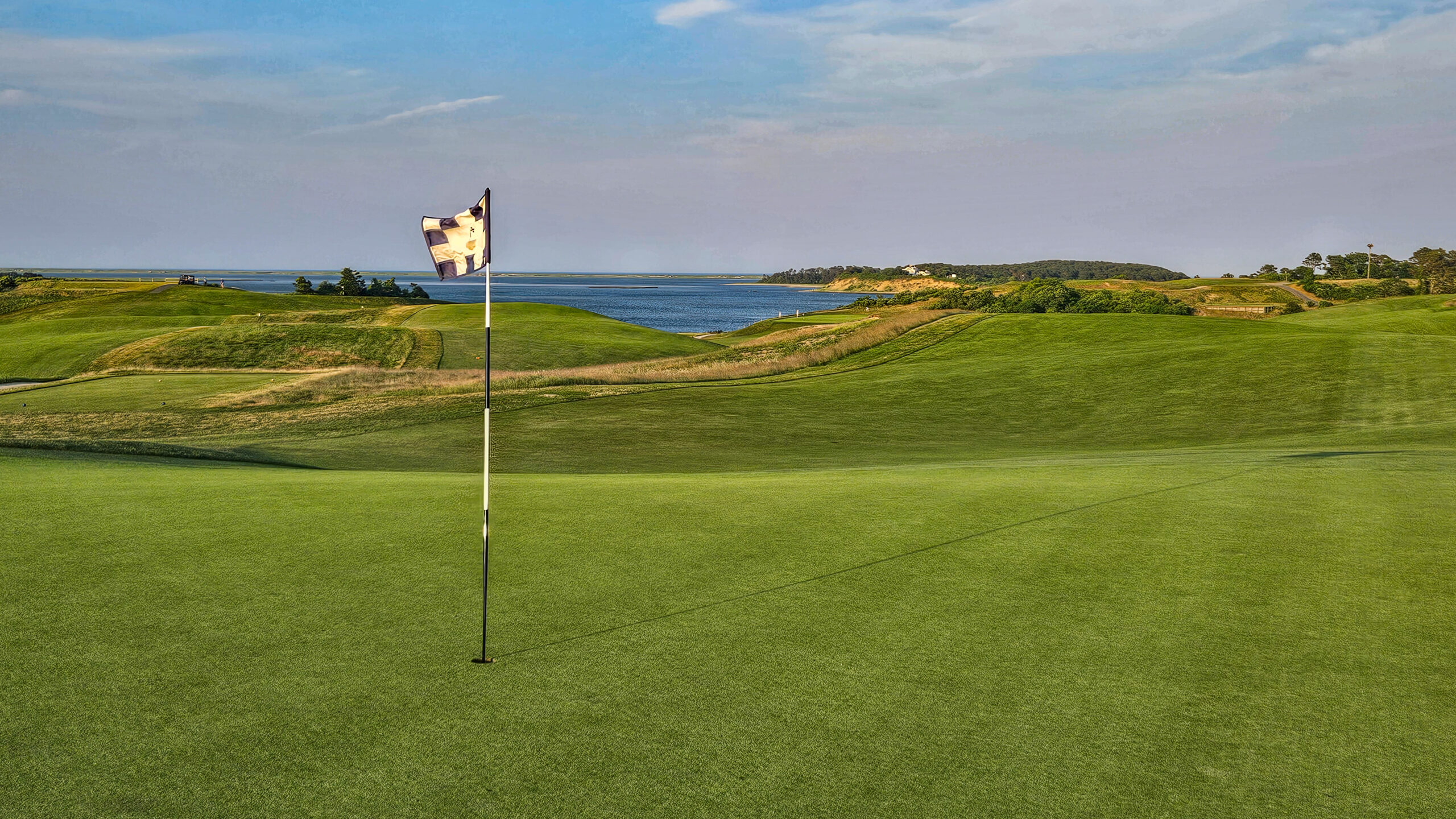
Located in the middle of a glacial moraine, the heaving property at Eastward Ho! is unlike any other in world golf and Herbert Fowler made the most of it with a brilliant figure ‘8’ routing.
For almost two years, he stalked on horseback the vast property some 700 feet above sea level on the North Downs. Finally, the first course at Walton Heath Golf Club opened in May, 1904, and was immediately recognized as a great design. Whereas the construction of Woking and Sunningdale predated the acceptance of the Haskell ball, Walton Heath was specifically built with it in mind. In fact, the course was so good that James Braid signed on to be Walton Heath’s first professional four months before the course opened. And Braid remained there until his death 46 years later. To this day, the exposed Old Course at Walton Heath is the benchmark upon which all heath courses are judged.
While Walton Heath is recognized as his masterpiece, Herbert Fowler produced other exceptional courses. His re-design of Westward Ho! had critics proclaiming it the equal of any links. In fact, when Westward Ho! re-opened in 1908, one could argue that Herbert Fowler was the man most responsible for the finest inland and finest links course in the world!
Golf course architecture was halted by World War I but by 1920, Herbert Fowler was at it again on both sides of the Atlantic. In England, he was focused on the completion of the East Course at Saunton, near his beloved Westward Ho!. Set through inspiring sand dunes, the course has many admirers. In fact, when asked to consider if an ideal course already existed in the British Isles, Wethered and Simpson wrote in 1929 that ‘we would definitely give our vote for Saunton in North Devon.’
In the United States, Herbert Fowler was busy with several projects in California including work for the Los Angeles Country Club. His sole east coast project was on Cape Cod near the town of Chatham. Ironically, according to Tom MacWood, the founding members of the club consulted with Willie Park Jr. of Sunningdale Old fame several years before regarding the suitability of the terrain for a golf course. Park gave it an enthusiastic response claiming it could be ‘equal to, if not better than, any course this side or the other’ of the Atlantic. However, in 1921 when it came time to build the course, the club board selected Herbert Fowler as opposed to Park.
As was his want, Herbert Fowler requested a horse to cover the property and apparently, the horse was borrowed from the Myopia Hunt Club. Unlike Walton Heath which has an out and back routing, the two nines at Chatham loop out and back from each side of the clubhouse, which is located in the middle of a glacial moraine. Many have praised Pete Dye for his use of a figure ‘8’ routing at The Ocean Course at Kiawah and again at Whistling Straits but it is worth noting that Herbert Fowler did so seventy years (!) prior. Perhaps Scotland’s North Berwick routing influenced Herbert Fowler?
As for Herbert Fowler‘s design beliefs, he summarized them best when he remarked, ‘God builds golf links and the less man meddles the better for all concerned.’ This minimalist approach is evident in all his designs—the teeing areas are simple affairs, there are no superfluous bunkers, the greens are frequently extensions of the fairways, and there is never any ‘framing’ of the greens.
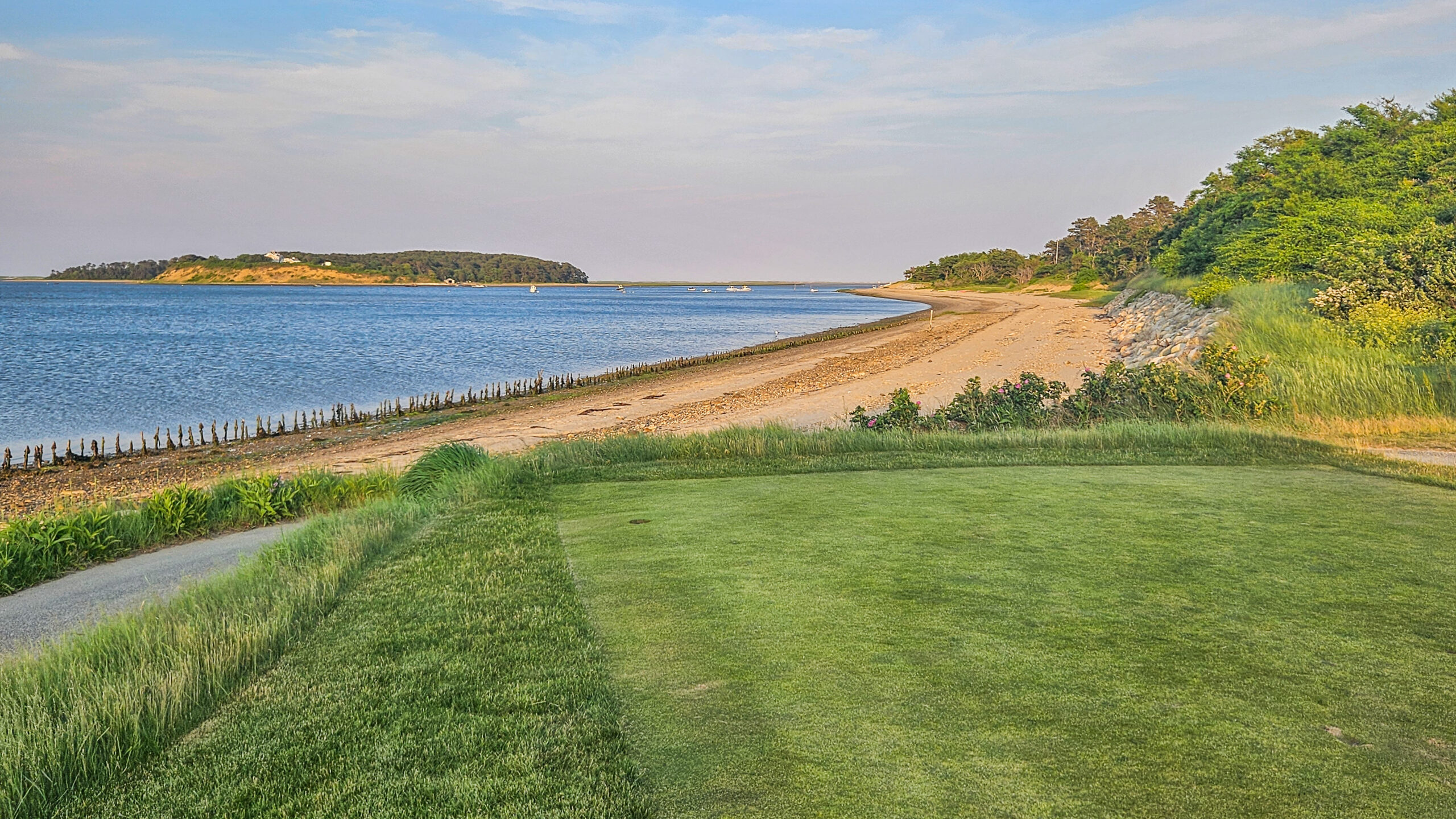
Eastward Ho! is presented in an uncluttered manner, providing maximum opportunity for the player to soak in his surrounds.
While cross bunkers, heather and gorse form the challenge at the comparatively flat Walton Heath, Herbert Fowler used the rolling topography at Eastward Ho! to keep the golfer off guard. Similar to Westward Ho!, the golfer continually faces the timeless dilemma of links golf: controlling the trajectory of his shot from an awkward stance. Nonetheless, despite its abundance of natural charms, the club started to realize around 2001 that perhaps the presentation of the course wasn’t taking full advantage of Herbert Fowler‘s design. After a careful selection process, the club elected to go with Keith Foster and his restoration plan was adopted in 2003. A startling transformation took place over the next several years, with width returned to the course, trees removed to open up long views with which few courses can compete and bunkers restored.
Important in this whole process was Frank Hancock’s coming on board as green keeper. Previously, he was the first assistant at Shinnecock Hills and came here immediately after the 2004 United States Open. He was also the second assistant at Pebble Beach before heading to Long Island, so in him, the club felt like they were hiring a man with both experience and a vision as to how a course should play when located beside a large body of water. In the near term, Hancock did a fantastic job in firming up the turf in general and especially the turf that feeds onto many of the greens (e.g. greens like the third, fourth, eighth, ninth, tenth, fourteenth and seventeenth). Asked how he achieved these results, he replies `The approaches were firmed up by attacking the thatch with intense aeration (sixty times in five years), literally tons of sand topdressing after every aeration, and water management. Our greens and approaches are watered almost exclusively with a hose by qualified personnel, no unnecessary water is applied to greens or approaches at anytime during the year.’
In addition, from 2004 until 2007, over 17,775 square feet of putting surface was recaptured as the greens were pulled back out to the edges of Herbert Fowler‘s fill pads. Thus, many of the perimeter hole locations—which often times are the most interesting ones—were reclaimed. As it stands now, Eastward Ho! enjoys outstanding short game interest. Given today’s green speeds, the pitch of many of these Herbert Fowler greens makes it even more imperative than in Herbert Fowler‘s day to have precise distance control on one’s approach shots. Get out of position (e.g. above the sixth or to the right of fourteenth hole locations) and even the best find this 6,400 yard course a thorough test of their skills.
Holes to Note
First hole, 390 yards; Many of the members of Eastward Ho! live in the greater Boston area and come down to the Cape for weekends. Given how star studded the golf is around Boston, the course and the environment need to be such as to compel people to make the two hour drive. If ever that was the case—of a course being so distinctive and featuring so many one-of-a-kind holes—that the drive was immaterial, it’s Eastward Ho! From the first hole on, there are at least a dozen holes that will remind the golfer of nothing he has ever played or seen before. For his part, Herbert Fowler appreciated the unique opportunity that he was given here. In 1924, he wrote an article for Golf Illustrated entitled ‘Eastward Ho The Newest Links on Cape Cod‘. In it, he noted, ‘There is probably no place in the world where so many opportunities offer themselves for the making of the best type of golf courses as on Cape Cod. The natural soil, the contours of the ground, the climate, everything combines to make it a golfer’s paradise. In fact, one may truly say that the Cape closely resembles the land on which many of the historic links of Great Britain have been made.’
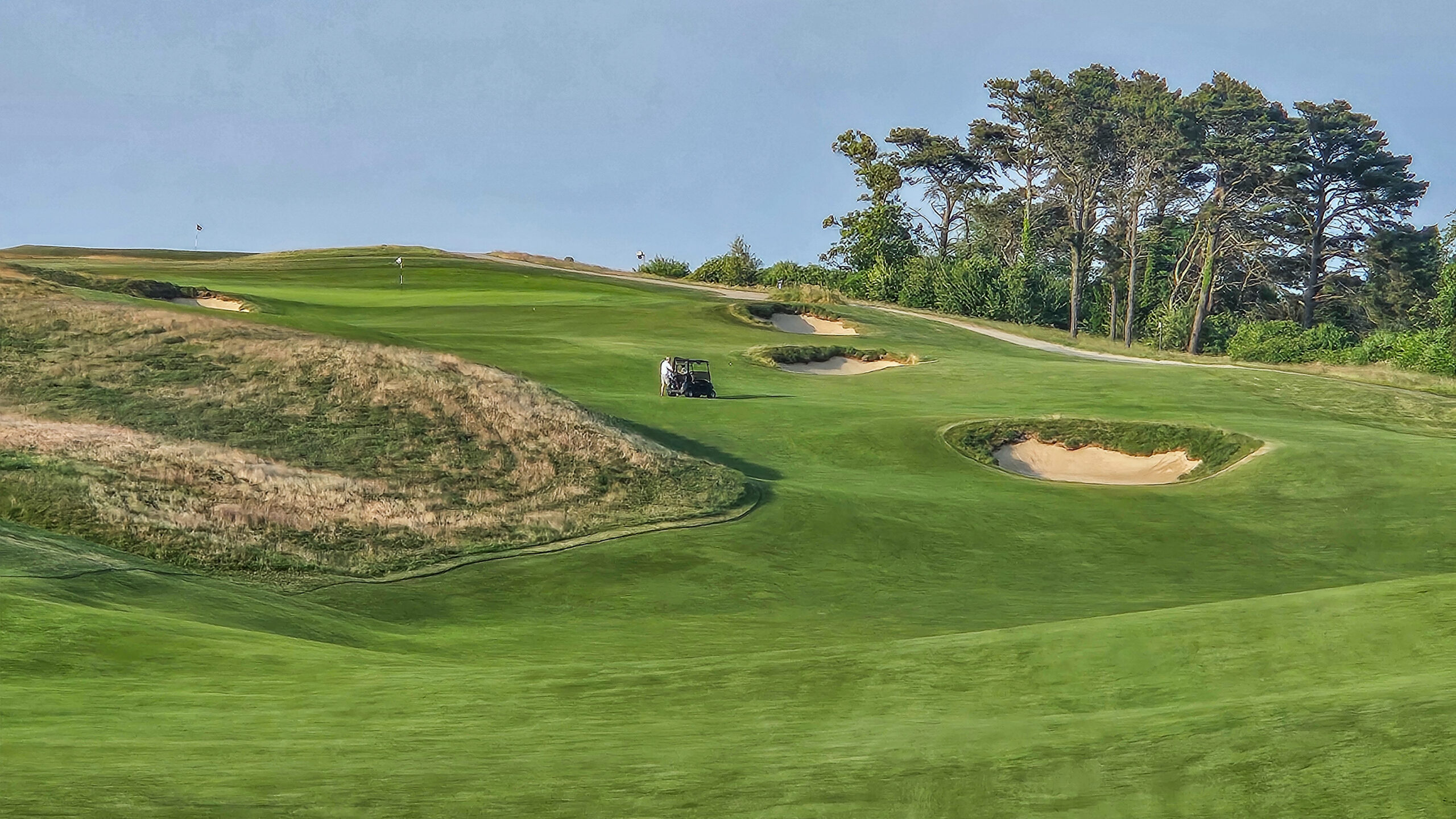
As seen from the tee, the dogleg left first hole is a thorough original, playing uphill past two crater bunkers to an elevated green. Even from the tee, the wicked back to front pitch of the green is evident.
Second hole, 350 yards; Given its topography, one of the challenges that Herbert Fowler faced in routing the course was how to lay the holes over the tumbling landforms. Get it wrong and it would forever feel like the course/holes were fighting nature. Also, Herbert Fowler was mightily concerned about giving each hole golfing quality. Too many uphill approach shots, for instance, and the golfer could quickly tire. As it turned out, Herbert Fowler used many of the tee shots on the front nine to cross over the landforms that were otherwise too abrupt for good golf. The calmer land he saved for the approach shots.
- Eastward Ho! enjoys a sense of adventure, in part because of the thrilling nature of some of its tee shots like the one found at the second.
- After the dramatic tee ball, the approach shot is over more level ground. Ever since his arrival in 2004, Hancock has done a fantastic job of presenting the bunkers in a manner consistent with the rugged, untamed nature of the property.
Third hole, 325 yards; One of the game’s great unsung short par fours, this hole has been made even more tempting by today’s technology than it was in the day of hickory golf when the course opened. Under favorable playing conditions, power hitters are dearly tempted to let fly from the tee in hopes of getting their tee ball to chase on or near the green. However, counterbalancing the allure to do so is a long bunker ten yards short of the green. The resting place for many a tee ball from accomplished players, this bunker leaves a fidgety recovery to the green and the hopes of birdie quickly start to fade.
- Given the rolling topography created from the sand, rock and debris left behind from a receding glacier, Fowler didn’t need to create a lot of man-made contrivances to challenge the golfer, as indicated with this view from the third tee.
- Care needs to be taken with the pitch to the third. Ala the first at Pine Valley, the green is a peninsula with sharp falls off left, right and over. Fowler’s short bunker seen above cleverly camouflages some of terrors of this green complex.
Fourth hole, 180 yards; When Herbert Fowler laid out his first course at Walton Heath, he first sought ideal locations to place his one shot holes and then radiated other holes from them. Thus, it comes as no surprise that Eastward Ho! enjoys an exceptional set of one shotters, arguably one of the top dozen sets in the world. Herbert Fowler wrote about the fourth green that ‘the location is quite spectacular as the cliff is close to it on practically three sides and on the other there is trouble for the inaccurate player.’
- A thriller, the fourth plays along the shoreline with steep drop-offs to the right and over.
- Typical of many Fowler greens, the fourth features a tremendous amount of back to front pitch. At today’s green speeds, they ensure that Eastward Ho!’s challenge does not diminish and only a fool would chase after this back right hole location from the tee!
Fifth hole, 525 yards; Herbert Fowler thought this three shotter would prompt much discussion as ‘It is one where the player will often be required to play with his head as much as with his club, and very often it will be wise to play a short second shot so as to reach the right spot as to play the third. This is the type of hole which is rare in America but which ought to become more common.’ As with his description of the fourteenth, Herbert Fowler makes it clear that one of the defenses of the course is having the unthinking golfer play from an awkward stance. The top of a hillock some one hundred yards from the green is the ideal level spot from which to play one’s pitch.
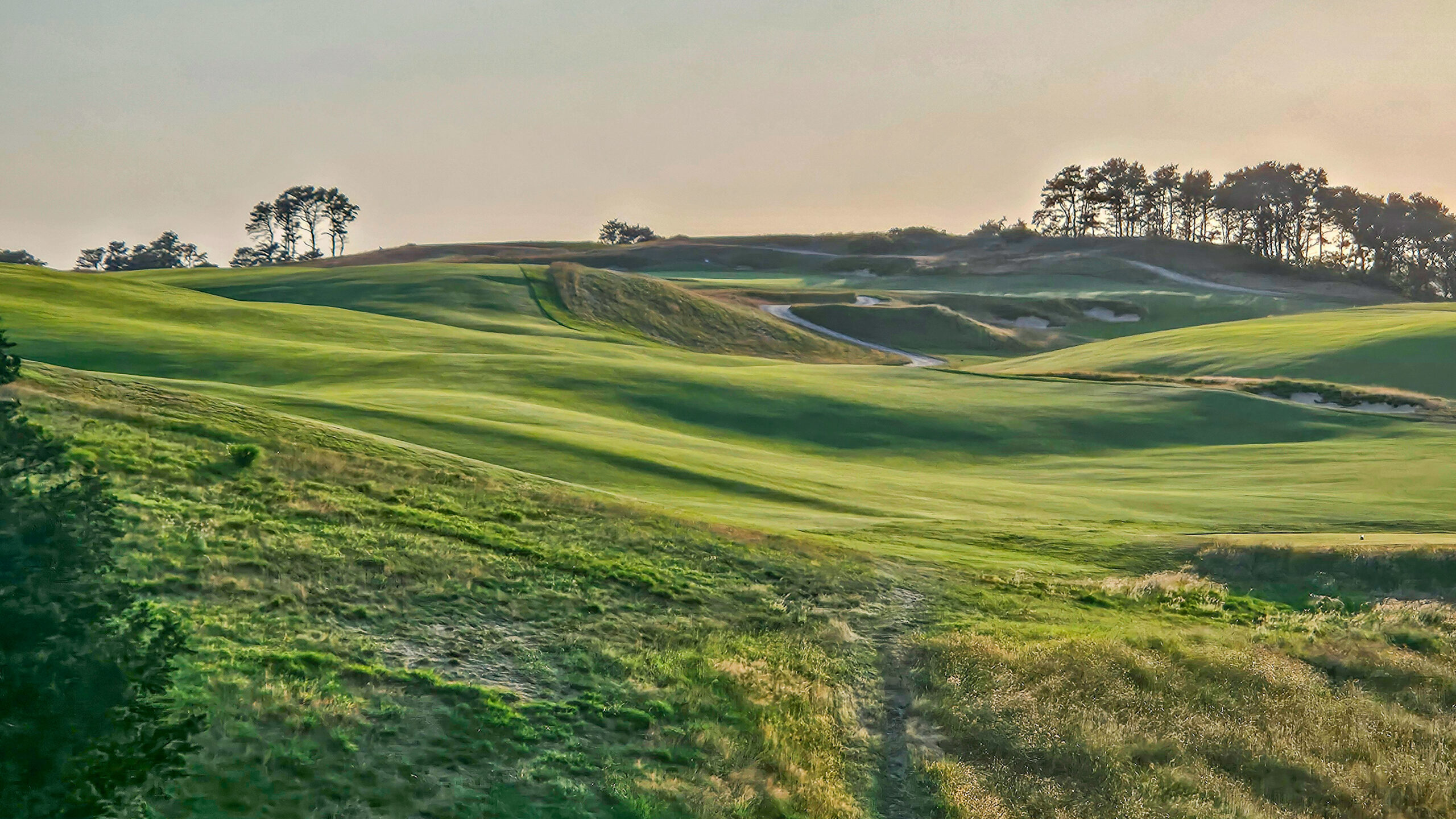
The high point of the fifth hole is 425 yards from the tee and Fowler thought it best to lay up with one’s second to this area as it provides the most level stances and the best view of his pushed-up green.
Sixth hole, 420 yards; As the photographs below demonstrate, this is one of golf’s most singular holes and Herbert Fowler deemed it ‘one of the star holes on the course.’ In fact, one can only marvel at how Herbert Fowler even found it. Certainly, in the early days of golf course architecture when the architect spent just a day or two staking out a course on site, this hole would not have been discovered. Such are the virtues of Herbert Fowler, his horse, and taking the time to do it right!
- The drive at the sixth clears the brow of the hill in the foreground before tumbling down into a valley from which…
- …this demanding uphill approach shot. Several of the longest approach shots at Eastward Ho! are to uphill targets, meaning the course plays longer than its length would indicate.
Given the terraced nature of the sixth green, putting off it is a distinct possibility.
Seventh hole, 180 yards; Apart from the challenge of hitting a shot up a sharp incline without letting it balloon into the wind, the key to the seventh is keeping the ball below the day’s hole location. Similar with the next green which is also elevated, this one slopes sharply from back to front. The golfer who finds himself with a downwind, downhill putt to a front hole location on either the seventh or eighth greens may well likely be chipping for his next shot.
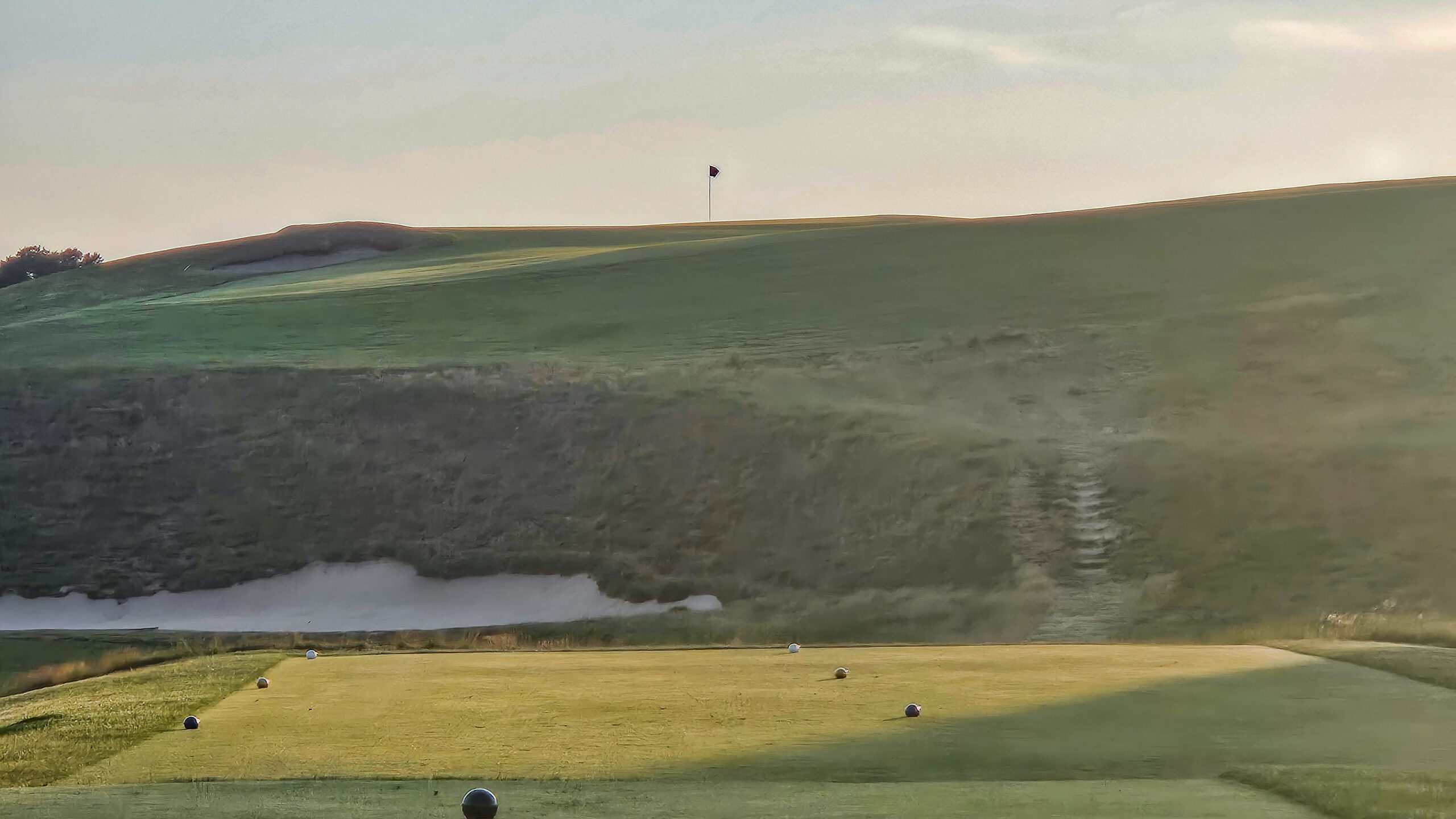
The abrupt climb uphill with one’s tee ball is captured in this view from the tee. It also means that even though the fourth and seventh are similar in yardage, the seventh generally requires at least one more club. The short bunker in the foreground was one of the bunkers recaptured thanks to Foster’s efforts.
Eighth hole, 350 yards; As much as any hole on the course, the eighth was dramatically improved by virtue of closely following Foster’s architectural plans. Three cross bunkers were restored in the face of a ridge some 110 yards from the green. Good golfers are now faced with a decision as what to do from the tee: lay up short of them or perhaps thread a driver past them for the sake of a short pitch in with the best view of the green.

Much to the club’s credit, three penal cross bunkers were restored in the driving area and provide strategic interest to the tee ball. In many ways, the eighth captures the essence of Eastward Ho!; not overly long but full of character.
Compare where the edges of the putting surface comes in this 2009 photograph (left) to 2003 (right), the golfer in 2003 would be standing on the green today.
Ninth hole, 390 yards; From the highest point on the property, the golfer needs to decide if he is willing to hug the cliff line with his tee ball. If so, he gains a level lie on a plateau some 230 yards from the tee. From there, the play is along the spine of a ridge, on top of which is located the fairway and then the green. As the hole is generally into the wind, a low running shot is the play but anything right or left will fall off the ridge and finish well below the putting surface. In several playing aspects, this hole may remind the golfer of the fourth at Rye Golf Club, one of golf’s most admired links holes. In fact, the green location along the spine is so inspiring that the golfer is stunned to learn it is the sole non-Fowler one on the course. His was thirty yards further back and slightly to the right but was lost during one of the clubhouse expansions. Exactly when this green was relocated and who did the work is not known but one thing is for sure: they acted wisely and Fowler would approve.
- As seen from the tee, the ninth provides a fitting conclusion to the front. The clubhouse was renovated in 2008 and exudes a Cape Cod charm.
- As seen from behind the green, note how the ridge perfectly feeds onto the putting surface. Given the firm playing conditions that are guaranteed by Hancock, the golfer is compelled to trying some sort of a low running approach shot.
Tenth hole, 210 yards; Given the hole’s length, the golfer must take particular care in gauging the direction of the wind. Complicating matters is that this is the first and only shot on the course that plays in a southerly direction. Fowler wrote about how ‘the green itself is built up at the back and that the whole putting surface is in full view from the tee.’

Another fine green location, this time just past the shoulder of a hillock.
Twelfth hole, 335 yards; With Fowler’s perfect placement of the green atop a knoll with sharp drop-offs on all sides, this hole is but one of the reasons that Eastward Ho! is always fully engaging to play. Even on the rare days when the wind is down, the greens on this 6,400 yard course provide vexing targets and the golfer is guaranteed to be engrossed with the task at hand.
- Given the out of bounds down the entire left, who can be blamed for aiming along the right side of the fairway? And yet…
- …the approach angle from the right is atrocious. Given the hole’s modest length, Fowler expected the golfer to play/place both his tee ball and approach shot with equal care.
Fourteenth hole, 370 yards; Fowler draped the entire hole over the side of a hill which heads down toward the shoreline. A draw from the tee will run forever and leave but a pitch. Common with many of his greens, it appears simple at first glance but looks are deceiving as the slope of the ground (and thus the green) is far more pronounced from right to left than the golfer first suspects.
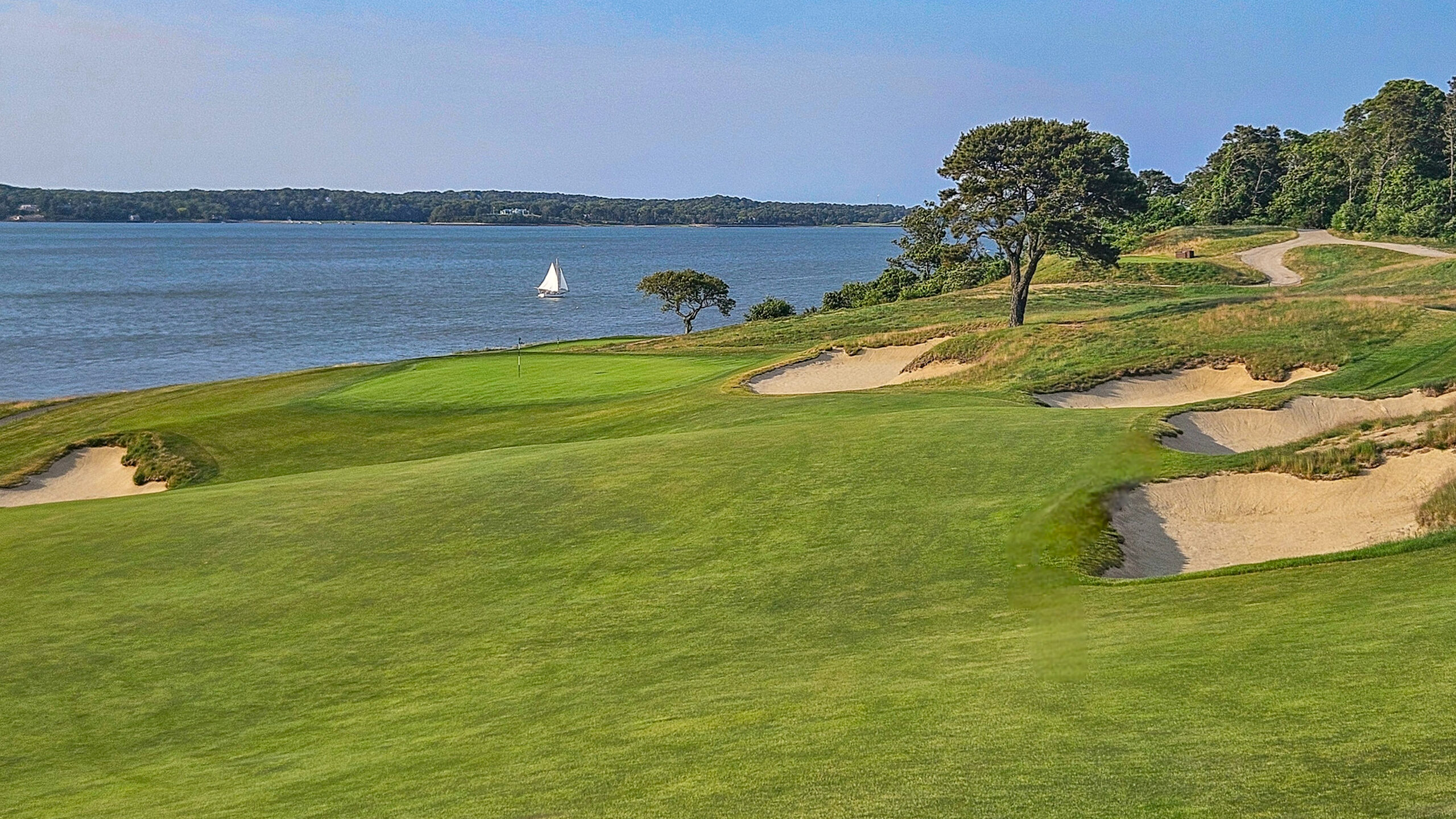
Though not readily evident to the eye, the green follows the terrain and thus slopes hard right to left. Any pitch just short is likely to feed down into the deep left bunker.
Below, how the hole looked in 2003 when the trees masked the natural splendour of its setting.
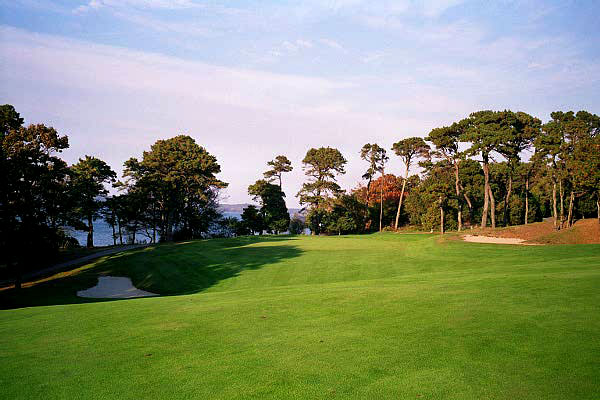
Fifteenth hole, 150 yards; Fowler called the finally one shotter ‘perhaps the best hole on the course.’ Though short, it rejects greedy tactics. Anything left is a sucker hole location, given that the hazard line is a mere three feet from the back edge of the green. The better golfer will punch a little draw, knowing his ball will take the right to left green slope and feed close to the left hole locations.
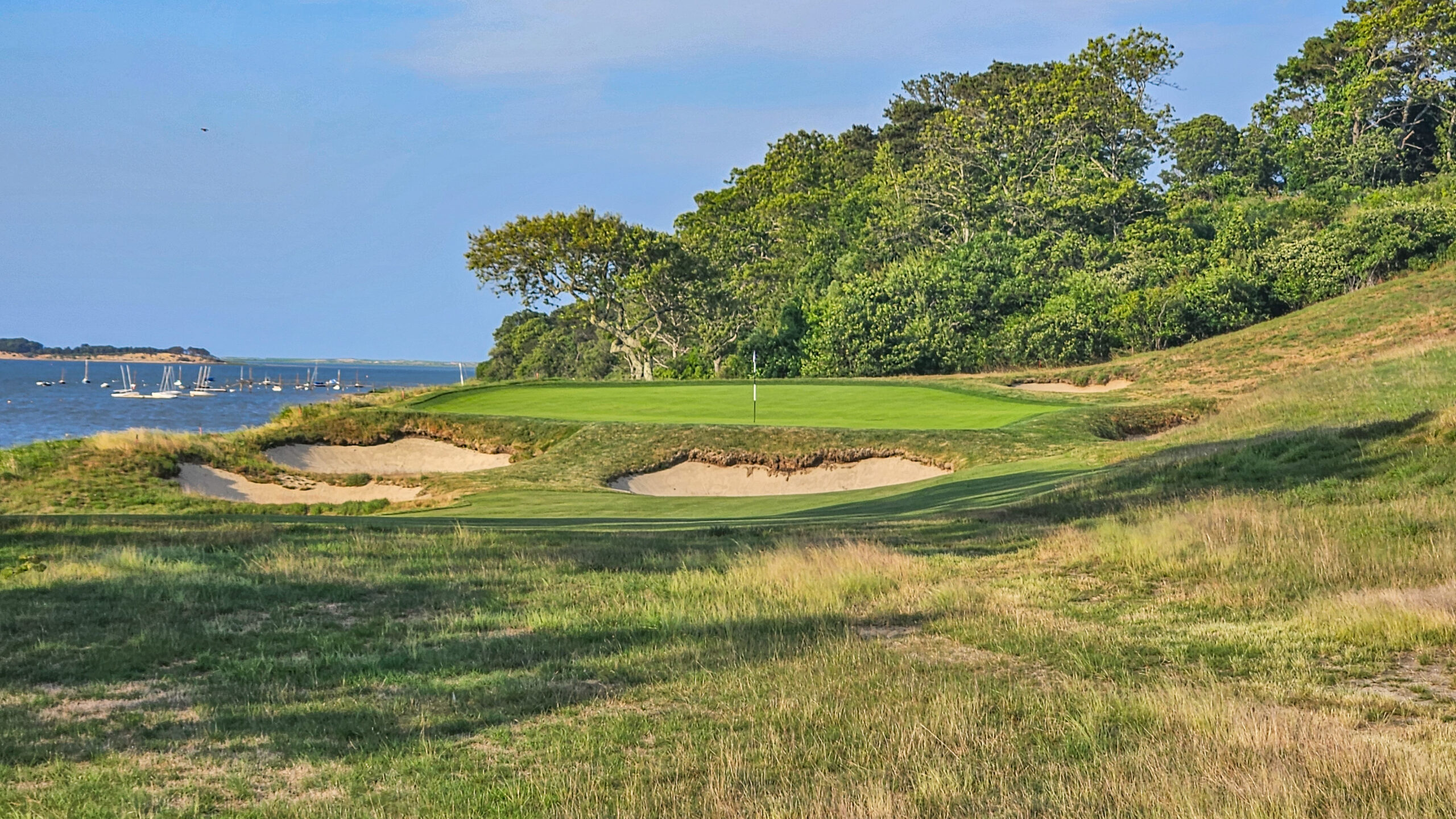
The fifteenth is the last of a superb quartet of one shot holes. Though the wind and deep bunkers create obvious challenges, so too does the green which is one of the best on the course.
Seventeenth hole, 520 yards; The trio of three shot holes at Eastward Ho! have a cumulative total of six bunkers amongst them. They don’t need any more as they fall over some of the lumpiest terrain on the property. With the sole exception of Pennard in Wales and maybe Cape Breton Highlands, the author has never seen a set of three shotters that come even close to capturing more ground movement. Fowler thought some would consider this the equal of the fifth and the small bumps and swales near the green make for one of the course’s most interesting approach shots.
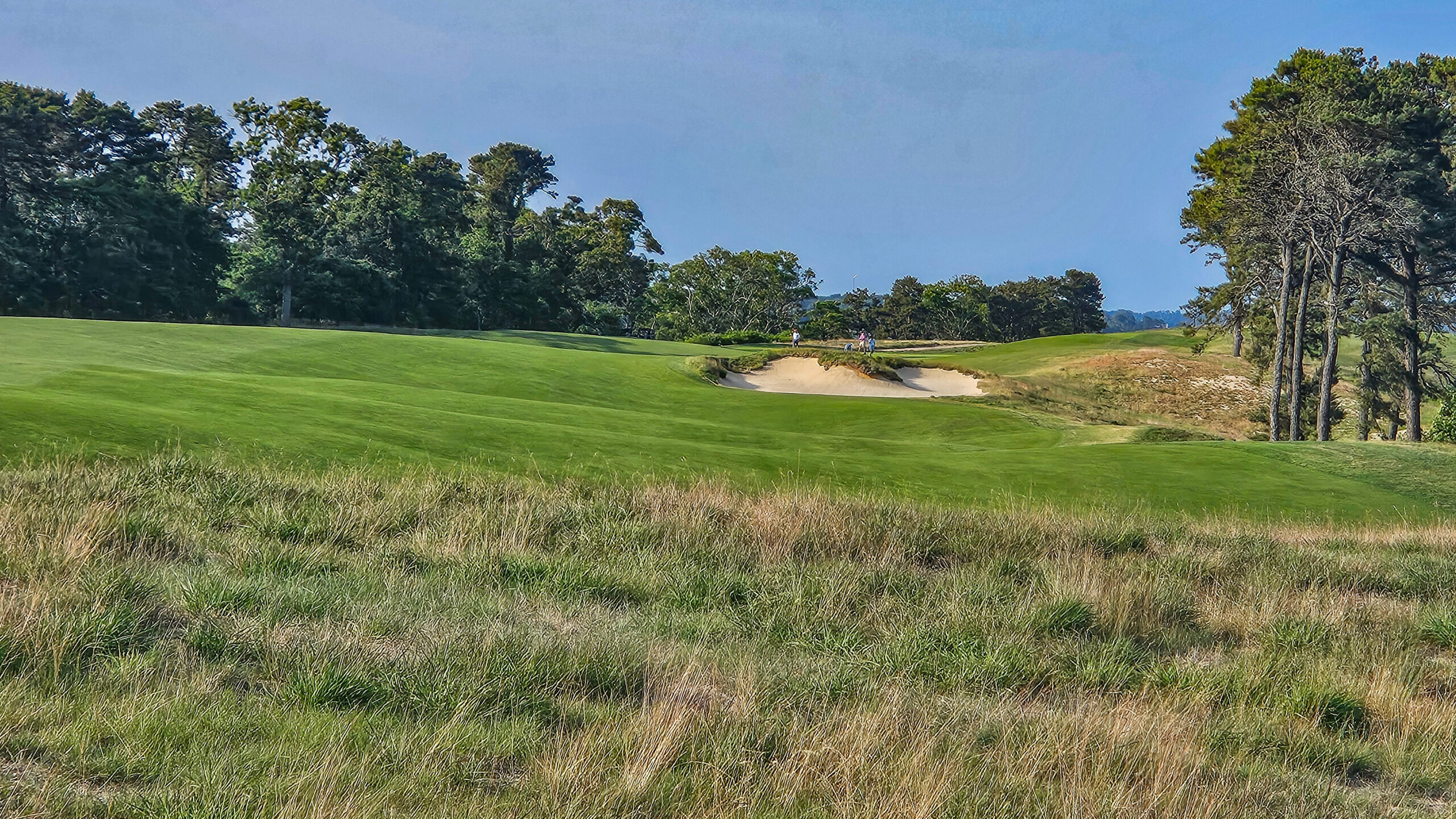
One of only two fairway bunkers on the three par five holes is found here off the seventeenth tee. It was one of the last bunkers restored under Foster’s guidance and it was one of the most important to be returned as well.
Eighteenth hole, 460 yards; At some point during the back nine, the first time player may question if the course is really as good as he perceives it to be. After all, little is heard of this gem outside of New England, so surely something is lacking? And yet, all the golfer sees is hole after good hole, so perhaps the course will end with a whimper like Elie, and thus leave the golfer with the nagging feeling that the course is more a holiday course than something more enduring. Just as Lundin Links concludes with a superb long two shotter, so does Eastward Ho! In fact, the scale of the hole makes the golfer feel puny. If he can summon the courage to hit his tee ball over a grove of trees that protrude in from the cliff line, he may be able to catch a sharp down slope at the 240 mark from the tee and gain an additional 50 yards in run. For most of us though, the tee ball will stay up top and the golfer is left with a 200 yard plus approach over a valley to a green located beneath the clubhouse windows. The green’s highest point is in its front third with the remaining portion gently sloping away from the golfer, making most up and downs difficult. Though Fowler considered this the best two shotter on the course, many think the sixth, eighth, ninth and fourteenth rest just as comfortably in the golfer’s mind.
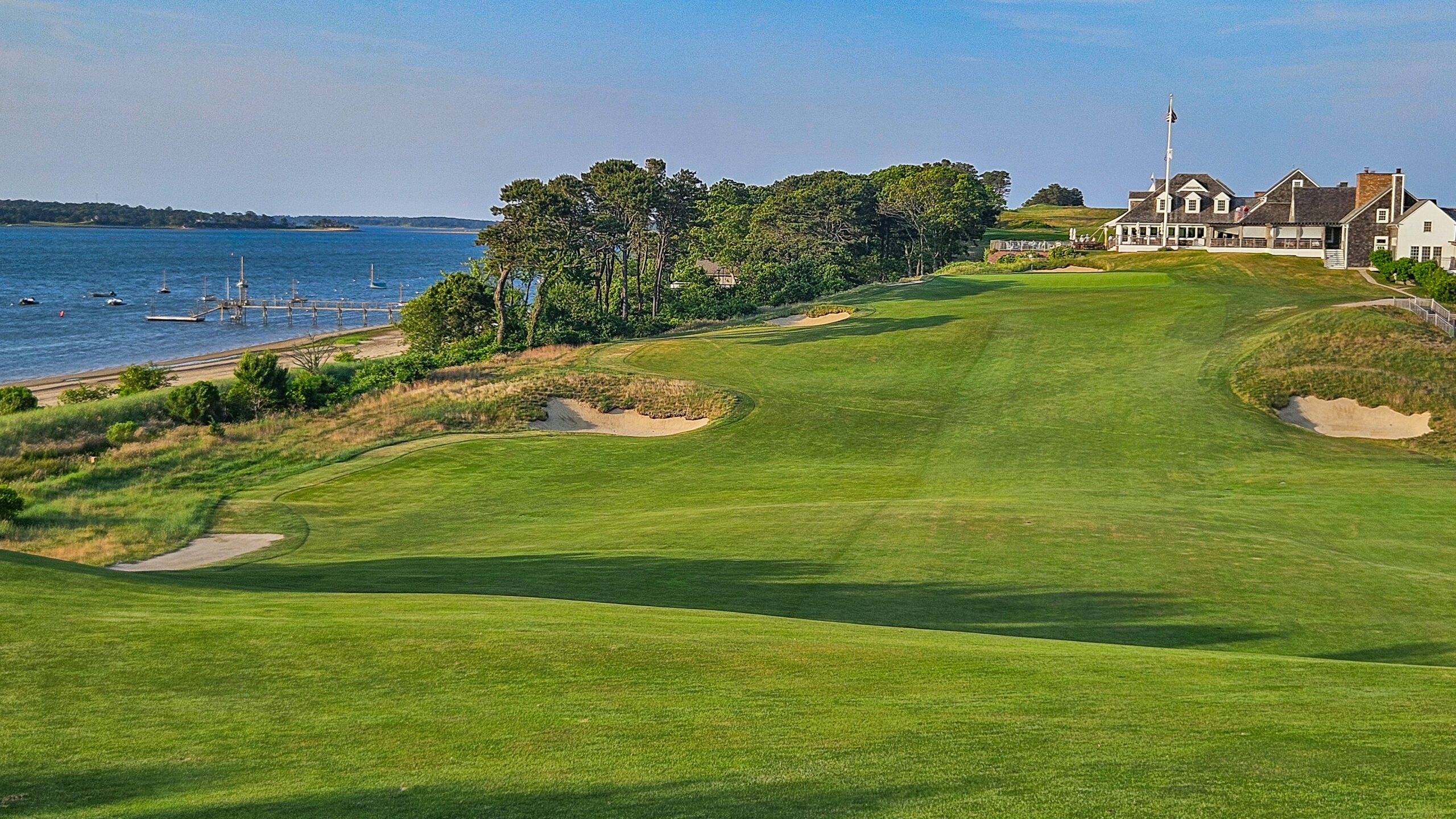
The final fairway plunging down before a long, slow climb back to the Home green is a fitting way to end a round on the Cape.
What would Fowler make of his design today? Undoubtedly, he would be thrilled as the course has never suffered at the hands of a lesser architect and the playing challenge remains strong, especially with the help of the ever present wind. Indeed, with today’s green speeds, it is fair to say that the pitched greens at Eastward Ho! are cumulatively the most difficult set that Fowler designed, even more so than those at Beau Desert in England. In addition, thanks to the recent tree clearing, Eastward Ho! is once again returning to how it was in Fowler’s day: an expansive feeling course and one where the golfer feels alone in nature. These are dominant themes at Walton Heath and Westward Ho! and it is great to see a similar sense return to Eastward Ho!
Chatham Country Club changed its name in 1926 to Eastward Ho! Country Club in deference to Fowler and his affinity for Westward Ho! in Devon, England. Both courses are unique in world golf and play markedly different from one day to the next. The golfer is continually asked to invent shots that he never knew he had. No wonder that Francis Ouimet and Bobby Jones both enjoyed spending so much time at Eastward Ho!

With its wild topography and stunning long views across Pleasant Bay, Eastward Ho! is a delightful place to be, with or without golf clubs.


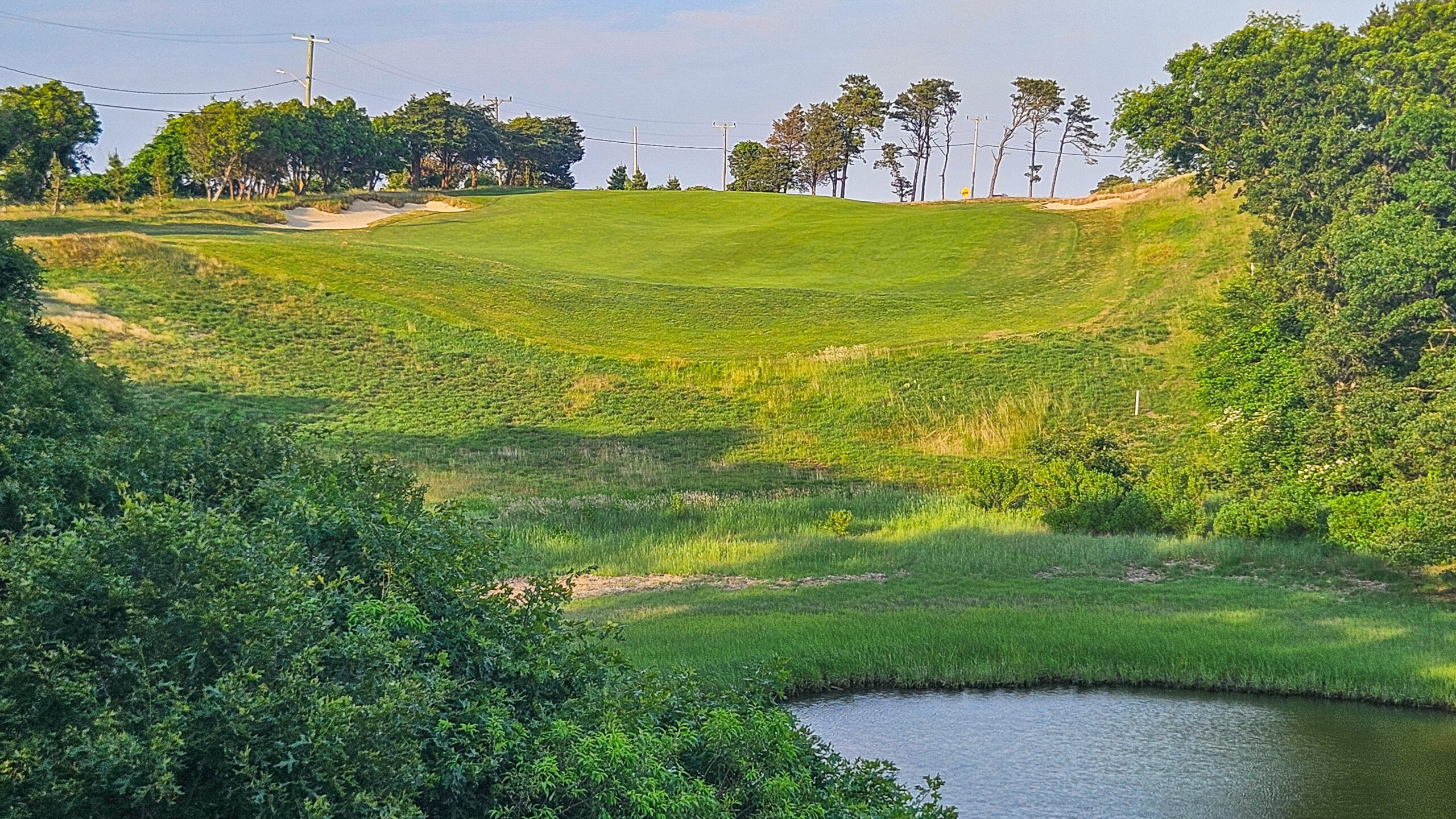
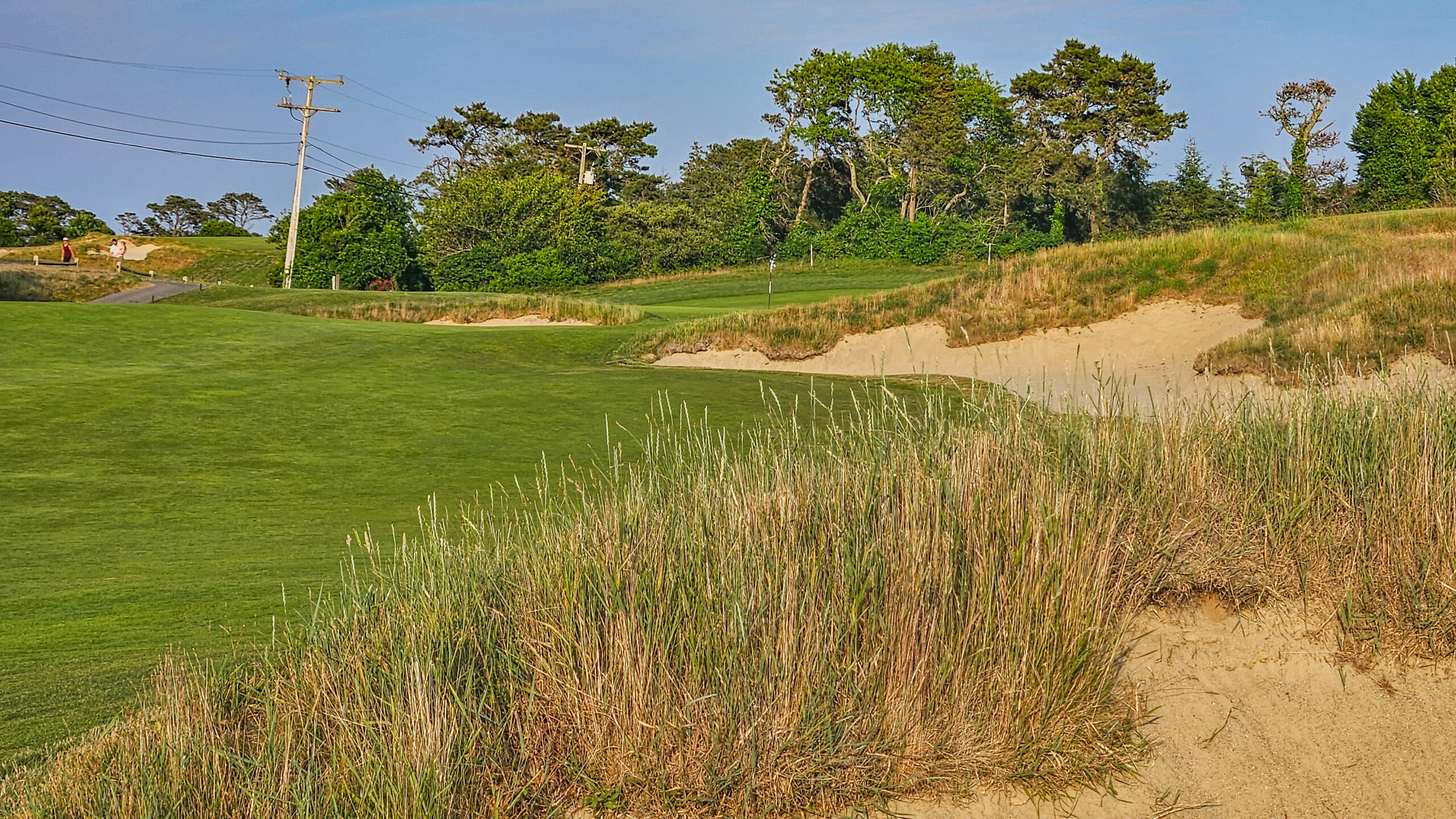

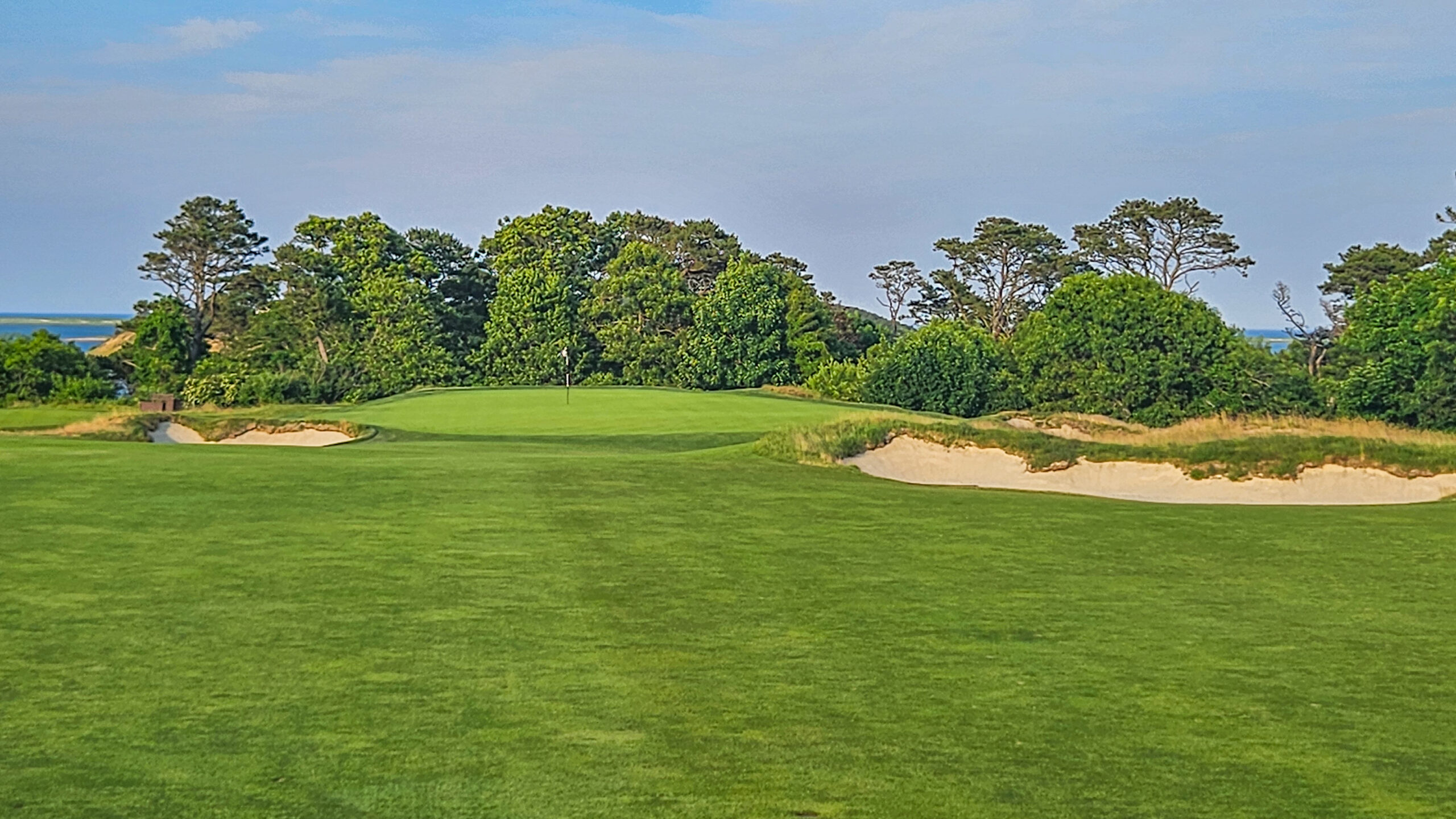
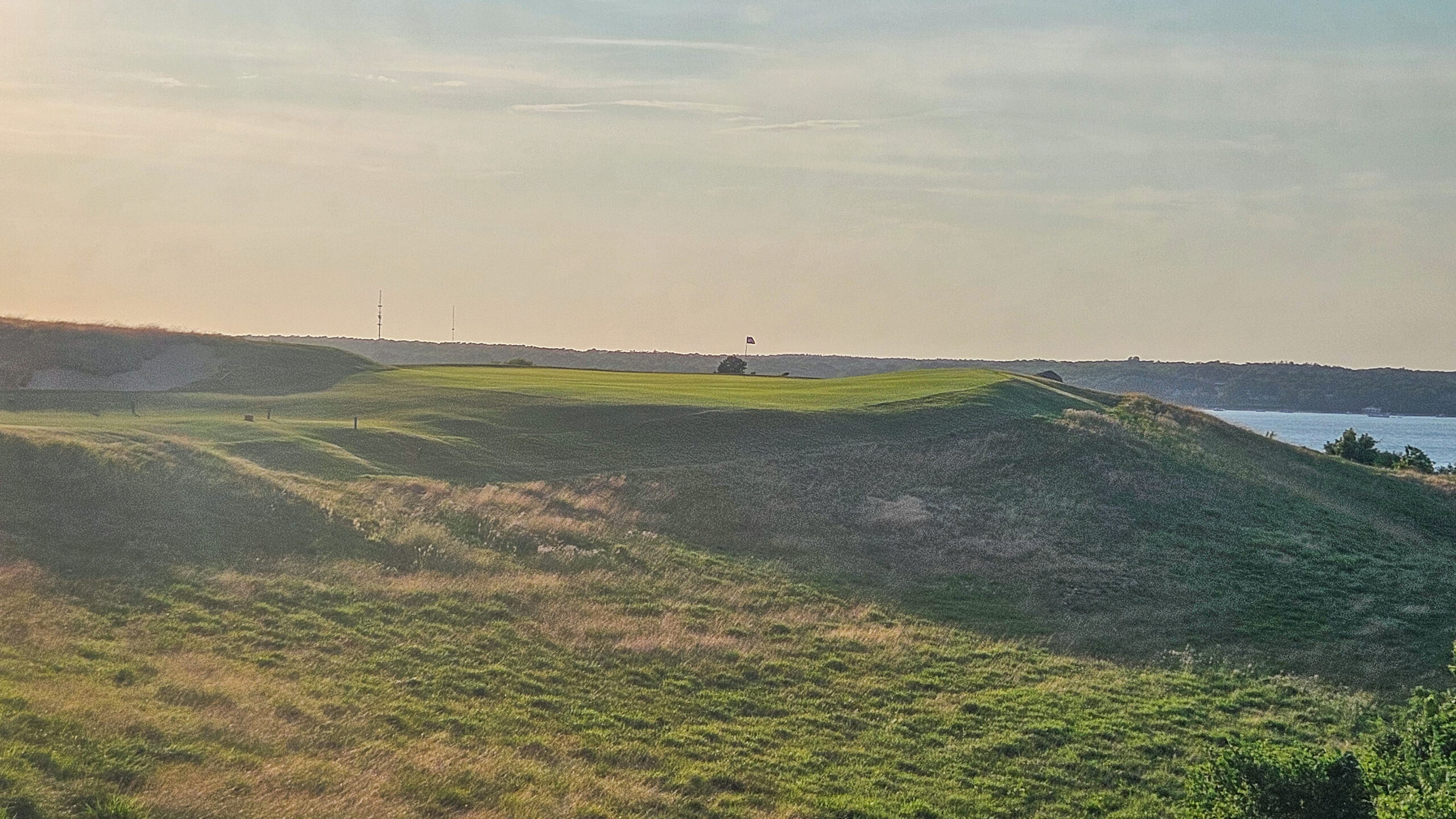

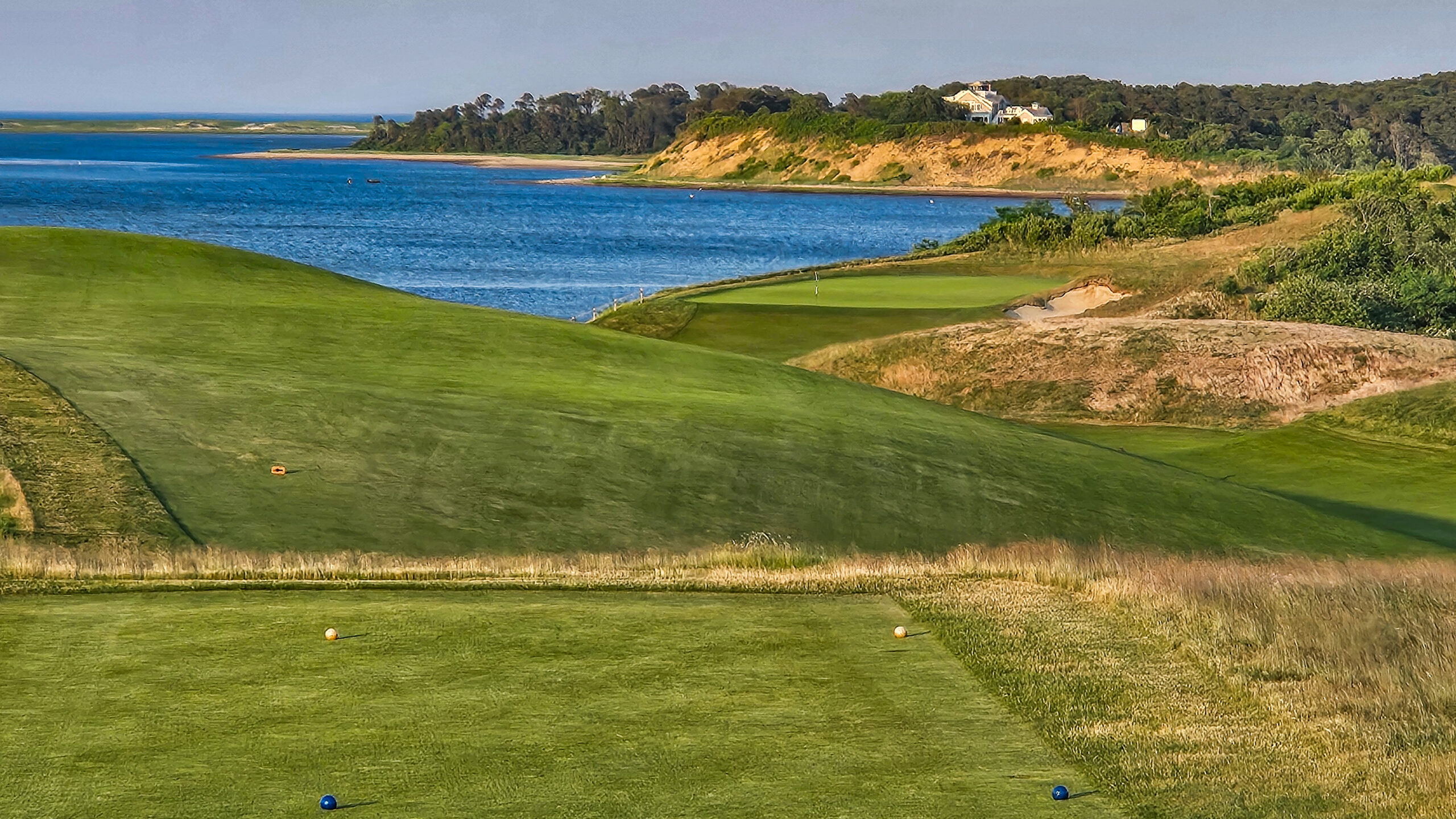

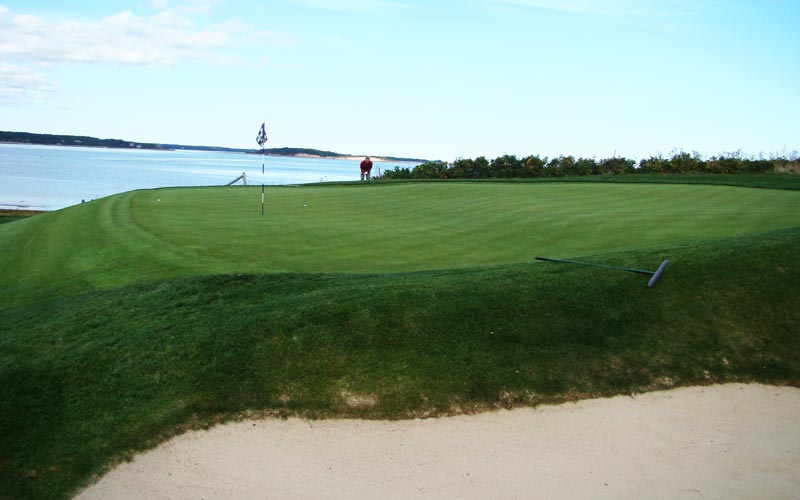
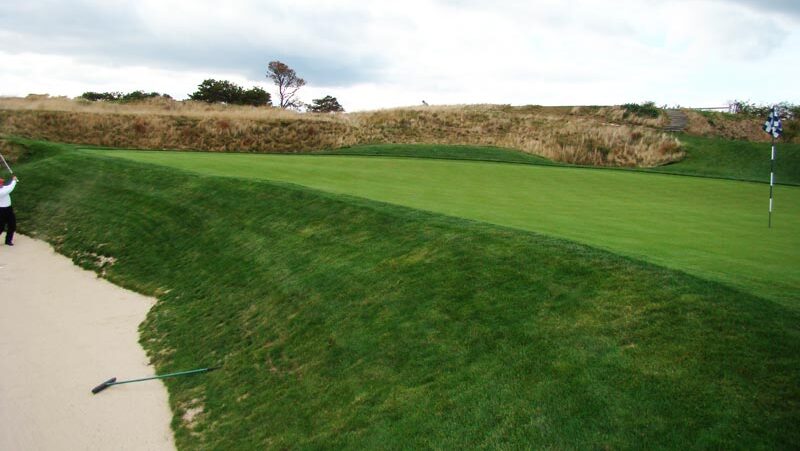
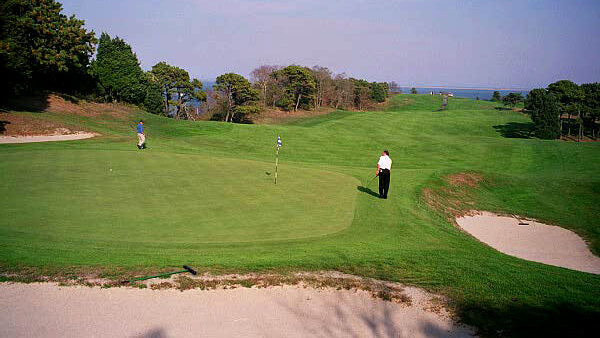
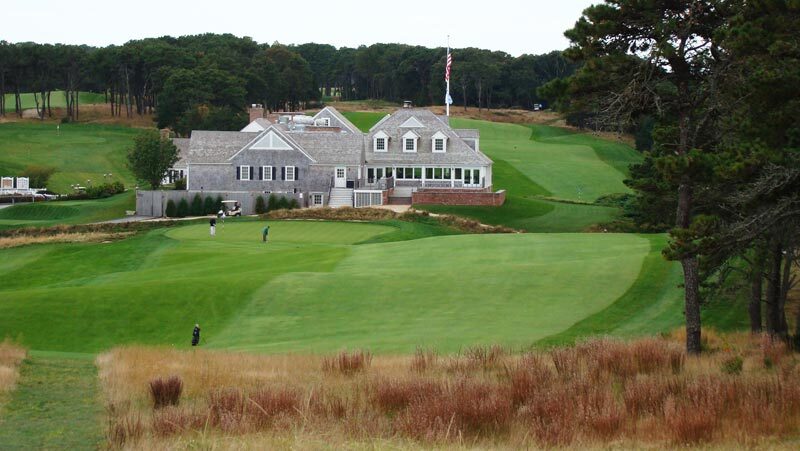

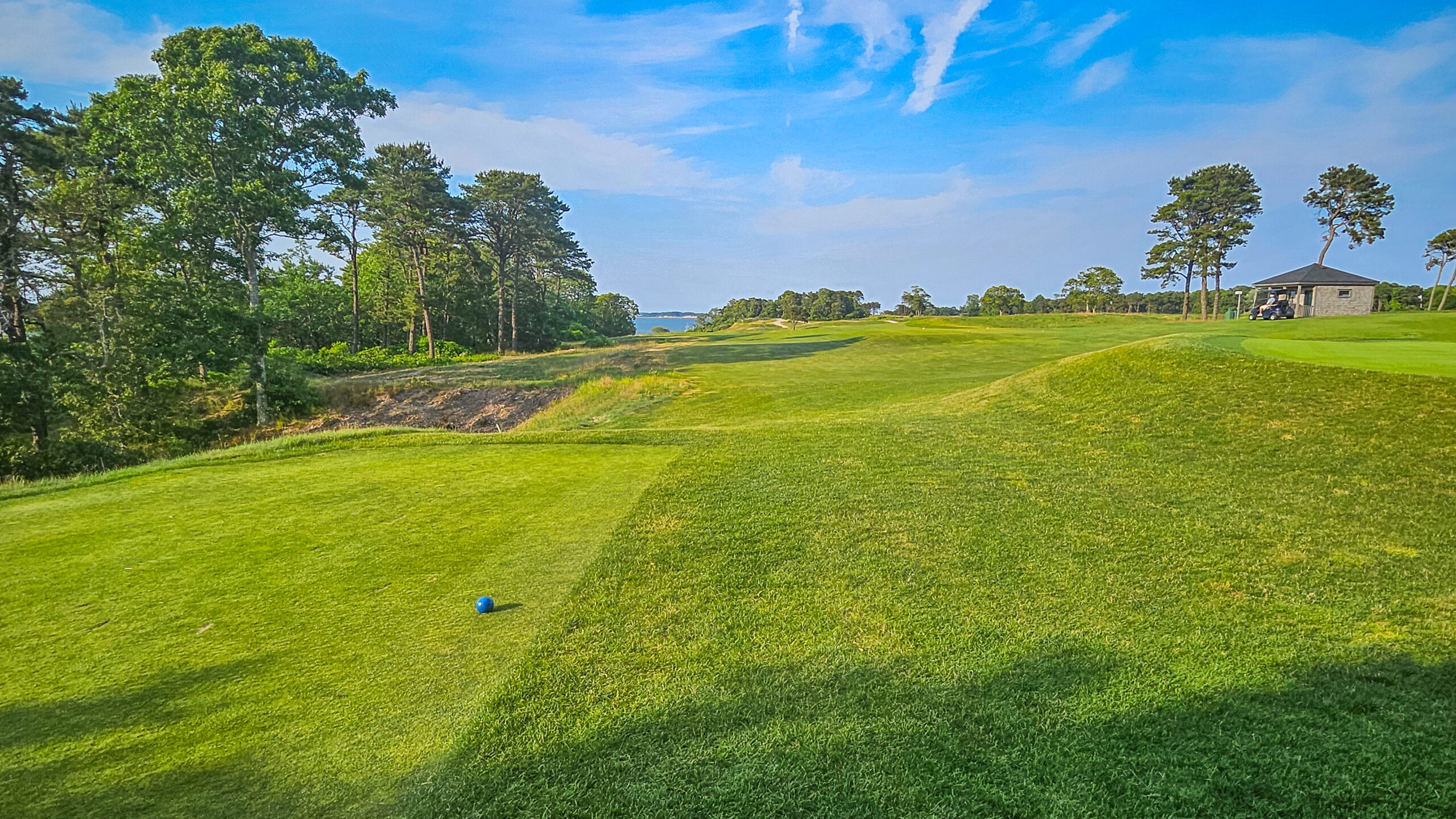
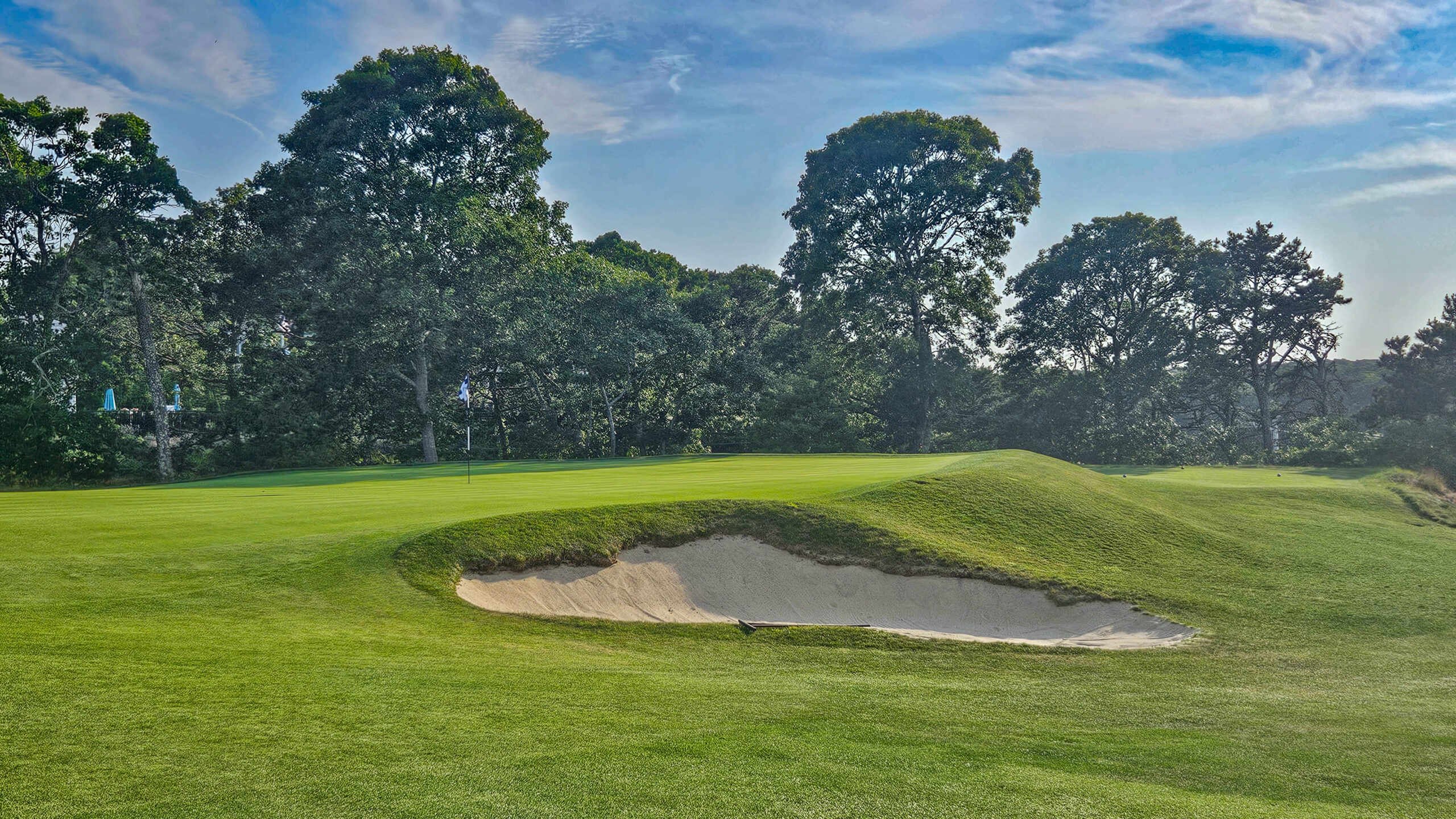



![The Park, West Palm (Lit 9) [2023]](https://golfclubatlas.com/wp-content/uploads/2024/12/IMG_7092-2-scaled-500x383.jpg)


